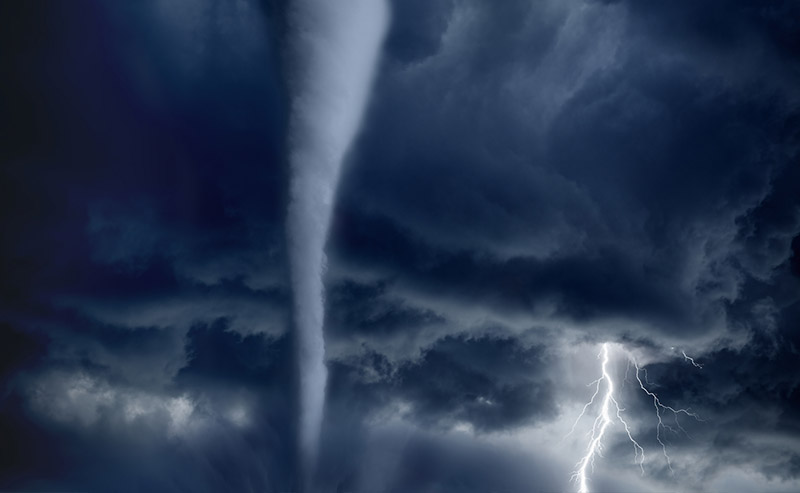When you think of winter weather preparedness, things like snow, ice, bitter cold temperatures and wind chill, immediately come to mind. Not tornadoes. Yet, twisters can, and unfortunately, do happen in the winter months, and they are often just as dangerous (if not moreso) as those usually occurring at other times of the year.
Just a few days ago, two tornadoes touched down in Alabama, wreaking havoc across the counties of Autauga and Wetumpka. While no life-threatening injuries or deaths were reported (thankfully), the damage was widespread. Another twister touched down in the Florida Panhandle, impacting Tyndall Air Force Base, which was hard hit by Hurricane Michael in October 2018. Clean-up efforts are underway in both states now, and will likely continue for weeks to come.
So, were these two tornadoes flukes, or are wintertime twisters becoming a more common occurrence? The stats may surprise you.
- Severe storms spawned 27 twisters in central Illinois in December 2018.
- The tornado outbreak of February 23–24, 2016, was an unusually prolific late-winter tornado outbreak (61 twisters) that resulted in significant damage, as well as seven fatalities, across the southern and eastern half of the U.S.
- In 2012, the National Oceanic and Atmospheric Administration (NOAA) recorded the largest Christmas Day tornado outbreak (30 twisters) in U.S. history. One of the two EF3 tornadoes lasted for an incredible 61 miles in Mississippi.
- The National Weather Service recorded one of the largest tornado outbreaks in years (14 twisters) in the Four State Region of Texas, Louisiana, Oklahoma and Arkansas, in December 23, 2009.
Clearly, tornadoes can spin up or worse, touch down, at any time of year, including the winter. And, they can do so just about any place imaginable. Tornadoes in the winter and early spring are often associated with strong, frontal systems that form in the Central States and move east, according to the National Severe Storms Laboratory (NSSL). “The big problem is that the tornadoes themselves tend to be moving faster,” says NSSL researcher Harold Brooks in a recent National Geographic News article.
No other weather phenomenon rivals the fury and destructive power of tornadoes. Twisters are also very hard to predict, says Popular Science, with an average warning time of only 8-10 minutes. Regardless of where you live, work or travel, it’s best to keep an eye to the sky and an ear to your cell phone or weather radio at all times. And, of course, to plan ahead.
Don’t get caught off guard this winter or in the months ahead. Take time now to add severe weather, or more specifically, tornadoes, to your emergency management, business continuity and hazard mitigation plans.






